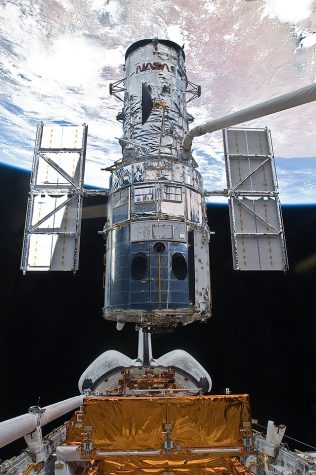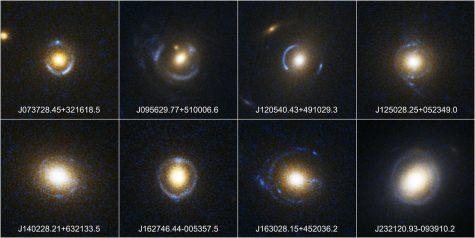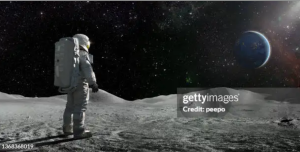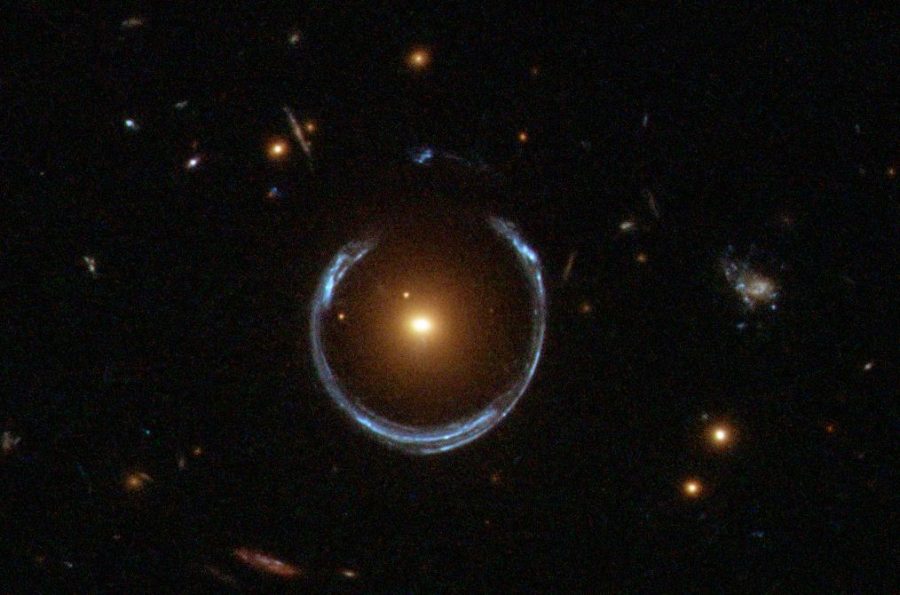New ‘Einstein Ring’ Leads to New Discoveries in Science
Telescope image of the largest Einstein Ring discovered, GAL-CLUS-022058s
October 2, 2021
Space has always been the biggest ‘what if’ regarding modern day research, besides the depths of the ocean of course. If you are someone who is pretty into science, you probably have heard of the term ‘Einstein’s Rings,’ and if you haven’t, well this is the article for you.

The Hubble Space Telescope, which is a collaboration between NASA and the European Space Agency (ESA), has captured images of a trick of light in space described as a “striking example of a deep-space optical phenomenon dubbed an ‘Einstein Ring’,” by NASA. One ring in specific, discovered in December of 2020, is the biggest and most complete ring that has ever been captured.
New information has come to the surface thanks to this particular Einstein Ring out in space, scientifically referred to as GAL-CLUS-022058s, and has pushed scientists to further our scientific knowledge on additional galaxies. The occurrence of these rings is due to gravitational lensing, which is a cluster of galaxies between a distant light source and the observer that bends the light as it travels towards said observer, an idea predicted by Albert Einstein in his theory of Relativity in 1912.
The theory goes that warped space, aka gravity, mimics stretching and twisting a rubber sheet, and that certain objects distant from us would be magnified, brightened, and distorted into warped views. This happens due to their light being bent as it travels across the blank slate of space and passes through gravitational bumps formed by objects that got in the way of the light path to Earth. The nicknamed Einstein Rings are actually donut-shaped loops of light, and are referred to as molten rings as well due to their location in the southern hemisphere of the constellation Fornax (The Furnace in Latin).

There have previously been 8 rings that we have been able to come across and picture, but GAL-CLUS-022058s is the largest and most revealing found so far. This find contains a remote galaxy that we had not yet known about. We were able to see it due to the magnified and distorted effects of space and the telescope, creating an image clear enough to measure.
Once astronomers measured the galaxy’s distance, it was revealed to being 9.4 billion light-years away and places it at the start of star formation in cosmic evolution. We know this information because of the exceedingly fast rate of star formation, seen at a rate a thousand times quicker than what occurs within our own galaxy. There has been obvious magnification.
The discovery of this image and information has created new opportunities for our scientists to getting one step closer to unlocking the secrets of the universe.











